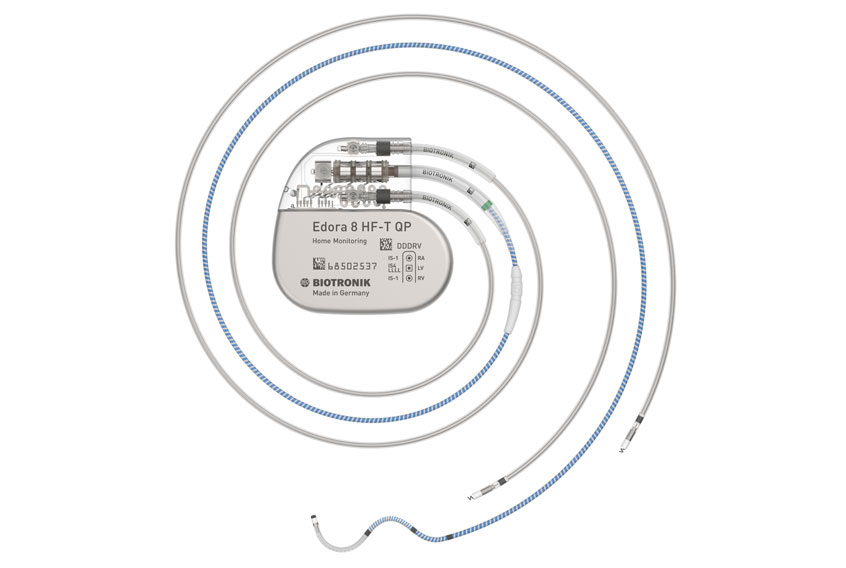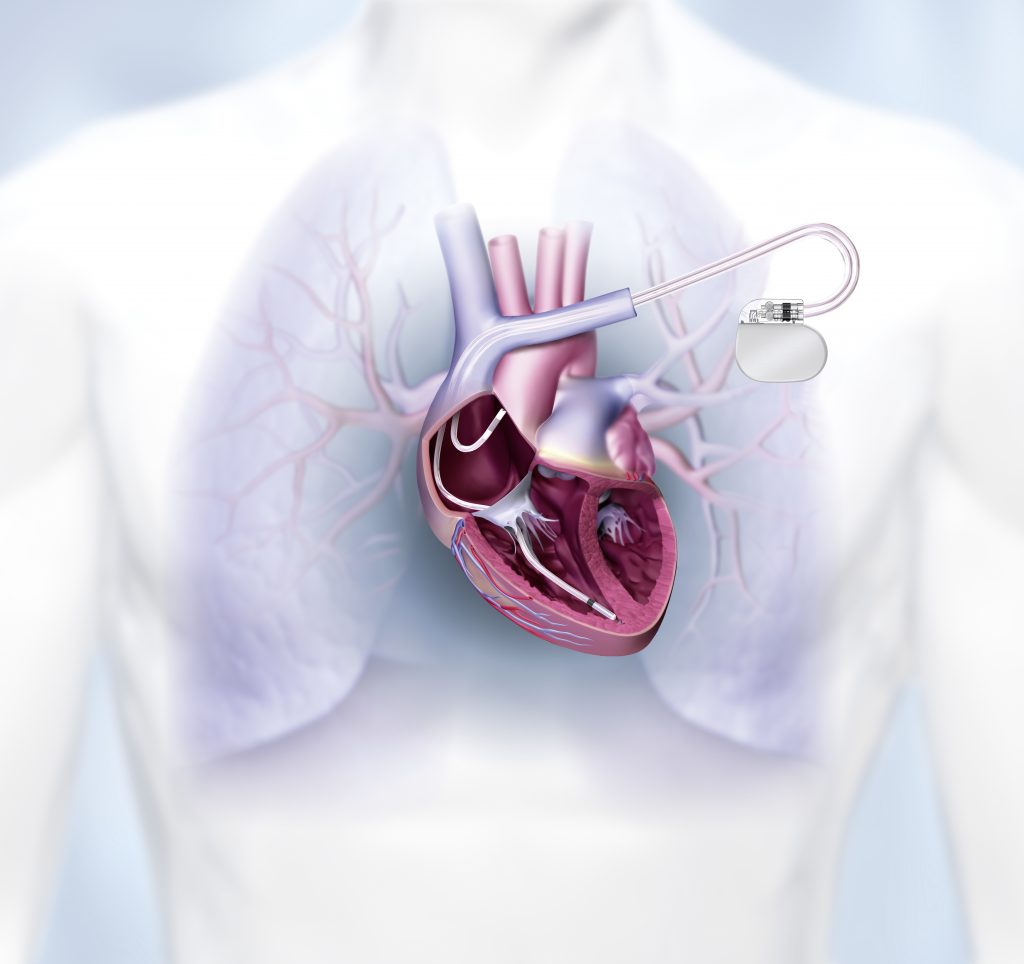Pacemakers
What is a Pacemaker?
A pacemaker is a small device that is used to help control abnormal heart rhythms. It consists of a battery and leads, and it sits under the skin on the left or right side of your chest. This device uses electrical pulses to prompt the heart to beat at a normal rate.
Why do I need a Pacemaker?
Pacemakers are implanted to help control your heartbeat. They can be implanted temporarily to treat a slow heartbeat after a heart attack, surgery, or medication overdose. Or they can be implanted permanently to correct a slow or irregular heartbeat or, in some people, to help treat heart failure.

Are there different types of Pacemakers?
Depending on your condition, you might have one of the following types of pacemakers:
- Single chamber pacemaker. This type usually carries electrical impulses to the right ventricle of your heart.
- Dual chamber pacemaker. This type carries electrical impulses to the right ventricle and the right atrium of your heart to help control the timing of contractions between the two chambers.
- Biventricular pacemaker. Biventricular pacing, also called cardiac resynchronization therapy, is for people with heart failure with abnormal electrical systems. This type of pacemaker stimulates the lower chambers of the heart (the right and left ventricles) to make the heart beat more efficiently.
What are the risks involved in having a Pacemaker?
We will have a more detailed discussion about risks before you agree to the surgery. While serious risks are rare, you are encouraged to discuss any questions or concerns with your medical team.
Risks include:
- Bruising or swelling at the insertion site
- Movement of the pacemaker generator or leads
- Infection
- Bleeding or blood clots
- Vein or heart valve damage, resulting from pacemaker leads

What happens during Pacemaker surgery?
Your pacemaker insertion will take place in an operating theatre. Before the surgery begins, you will be attached to heart monitors and have a cannula inserted in a vein in your arm. You will be given medication to make you relaxed and provide pain relief during the procedure. After a local anaesthetic, your doctor will make a small incision near your collarbone to create a pocket for the pacemaker battery. The pacemaker leads will then be threaded inside a large vein and in the right side of your heart, with the end of the lead being fixed into position inside the heart. The pacemaker will then be programmed and tested to ensure it is working appropriately for your requirements. The pacemaker battery will be tucked inside the pocket and the incision closed.
What happens after having a Pacemaker inserted?
Once your pacemaker has been implanted, you will be moved to the recovery area or to the ward to rest. You may be tender or sore and have some bruising at the site of the surgery – this should go away after a few weeks. You should be able to return home in most circumstances within 24 – 48 hours.
You will come back to our clinic for follow up after your procedure. We will give you instructions when you are discharged. You will need to contact us when you are settled at home so we can book your appointments. You will require regular pacemaker checks to ensure that the device is working correctly for your needs. The interval of these checks may change from time to time depending on your symptoms and the results of the pacemaker check. We encourage you to contact us before your scheduled appointment if you start to feel unwell.

